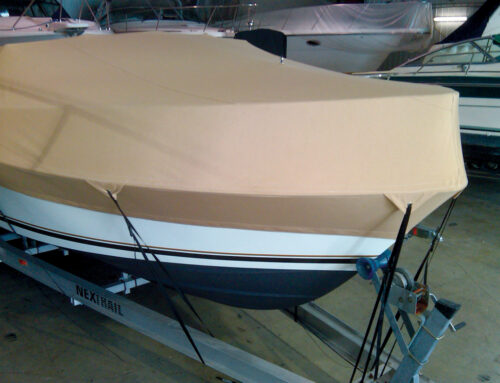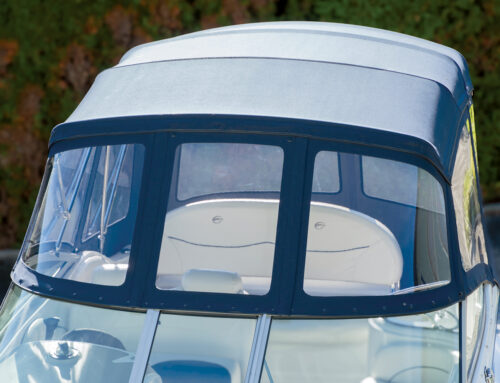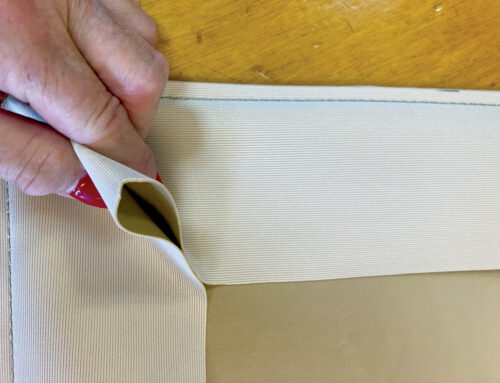Horizontal and cantilever frames
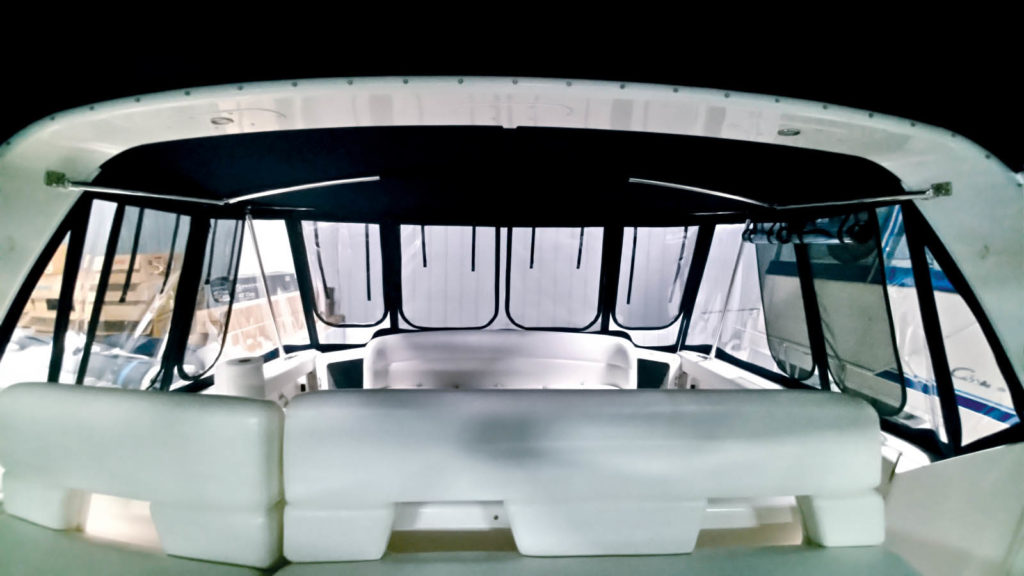
Following the typical 10-to-20-year delay that “new ideas” seem to take to catch on in the canvas industry, the popularity and demand for horizontal frame systems and cantilever support systems has finally arrived everywhere. Sea Ray actually offered a horizontal aft frame option in 1999 on its newly released 460 Sundancer. Some brave canvas shops were quick to try this new concept, but its appeal to boat owners has taken time.
A slow warming
The horizontal frame was such a drastic change from the standard “K” frame, many clients just couldn’t accept it. Northcoast Marine Specialties LLC began offering horizontal and cantilever frames in 2005, and a big issue with clients was that the canvas top and frame could not be rolled up, folded and stowed away like the old camper-top style systems could. Even though most clients never actually rolled and stowed away their camper tops, they still wanted the option. However, when clients actually saw the horizontal frame system on a real boat, the list of advantages quickly outweighed needing a removable top. Those boat owners who only had an aft curtain were the first to appreciate the horizontal frame design.

As clients have grown more sensitive to needing sun protection, having ample shade now makes more sense. The added square footage of usable deck area is a huge incentive for an aft enclosure (Photo 1). It’s like adding an addition to the back of your house and making your home 50% bigger! Who wouldn’t want that, right? The difference most appreciated by clients is the lack of clunky hardware and tubing on the stern of the boat (Photo 2). The clean lines of the horizontal frame system are eye candy for a boat owner. Although this design is most appealing on a large sport yacht, smaller boats are not excluded. Almost every boat owner can benefit from a horizontal-framed aft enclosure.
Various lengths and widths
There are three lengths typically offered to clients: half, three-quarters and full—meaning the distance from the arch, hardtop or forward-frame to the transom. There are three additional versions offered in terms of width: sport, tapered or full. When designing the length, simply have clients sit on the transom bench seat and lean back with their arms on the backrest like they sit when relaxing at their dock. Then determine how far the frame would need to extend toward the rear of the boat so that the aft curtains (aft windows) clear their heads.
The smaller the boat, the farther rearward the frame must extend, as in a three-quarter or full-length frame, because the frame is typically lower in height. A large boat, such as the Sea Ray 460DA, can accept a three-quarter length frame and still offer plenty of space for rear-seat lounging. Most clients ask for a shorter frame than what they will actually need.
We will build the frame longer than desired and mount it temporarily. Then, we have the boat owners come to the boat and sit on the back seat. Using masking tape, we run a strip from the transom to the frame at various points until it nearly touches their heads. Once the boat owners can visually see where the frame must extend to, you can reach an agreement and cut the frame accordingly.
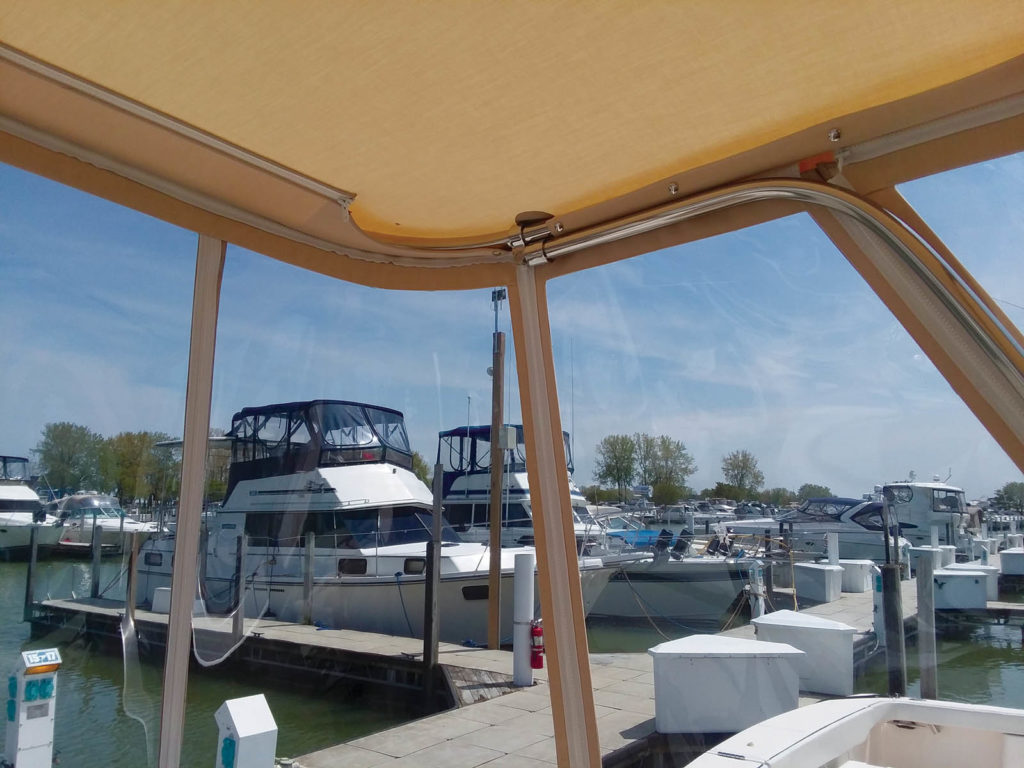
Wither the width?
The legs of the sport frame remain the same width from the mounts to the radius. This style typically matches the width of the arch and allows the side windows to have a cant or tilt to them, which keeps the enclosure from looking boxy. A tapered frame has legs that gradually get wider as the frame extends rearward toward the radius. This allows more entry space for boats that have transom doorways located in the extreme corners of the hull. A full frame design has legs that immediately become as wide as the hull, once clearing the arch or hardtop, and remain full width to the radius.
Cantilever frame
The term cantilever frame, sometimes called a floating frame, refers to the stanchions that support the frame (Photo 3). The stanchions are hidden under the top and give the appearance of a floating top. While a standard horizontal frame will have two vertical support stanchions near the radius of the main frame, the cantilever support stanchions also attach at the radius but run parallel to the main tube. The standard vertical supports are stronger and should be used on large-beam boats and full-length frame systems. The cantilever system does have its limitations and may require fittings to bridge between the stanchion and the main tubing for strength.
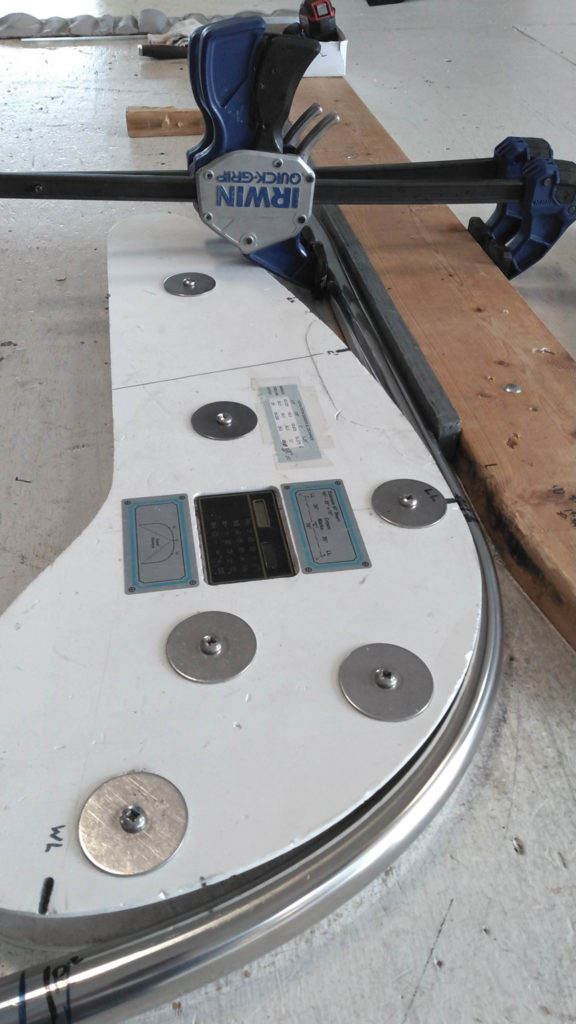
Bending benefits
Building a horizontal frame system is a canvas person’s dream! There is less tubing involved, and the math is as basic as math gets. Because you are building on a flat plane, there are no arcs, tangents, radii or angles to calculate. We build horizontal frame systems by hand using 1.25-inch stainless steel in .065 wall thickness.
The Northcoast Quick Bow Bender handles the radius bending, crowning and compound crown with ease (Photo 4). Even our employees who weigh less than 130 pounds will bend the steel by hand on a regular basis. However, your shop may have a different type of tubing bender. No worries. Simply bend a 90-degree sample and measure the diameter and circumference of the radius. Once you have that, you can calculate the beam and length of the frame using simple addition and subtraction (Image 5).
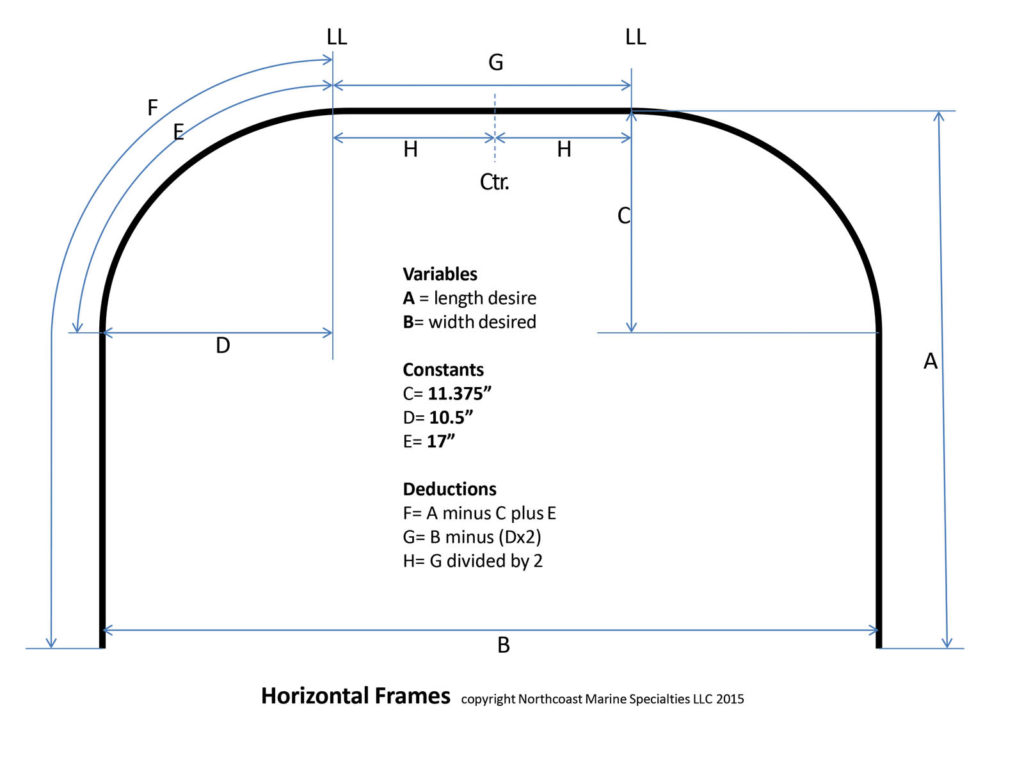
I find that adding 4 inches to the beam (width) measurement will provide enough additional pipe required for both the crown and compound crown (Photo 6). We suggest that you always include a compound crown in addition to your normal crown for added strength and proper watershed.
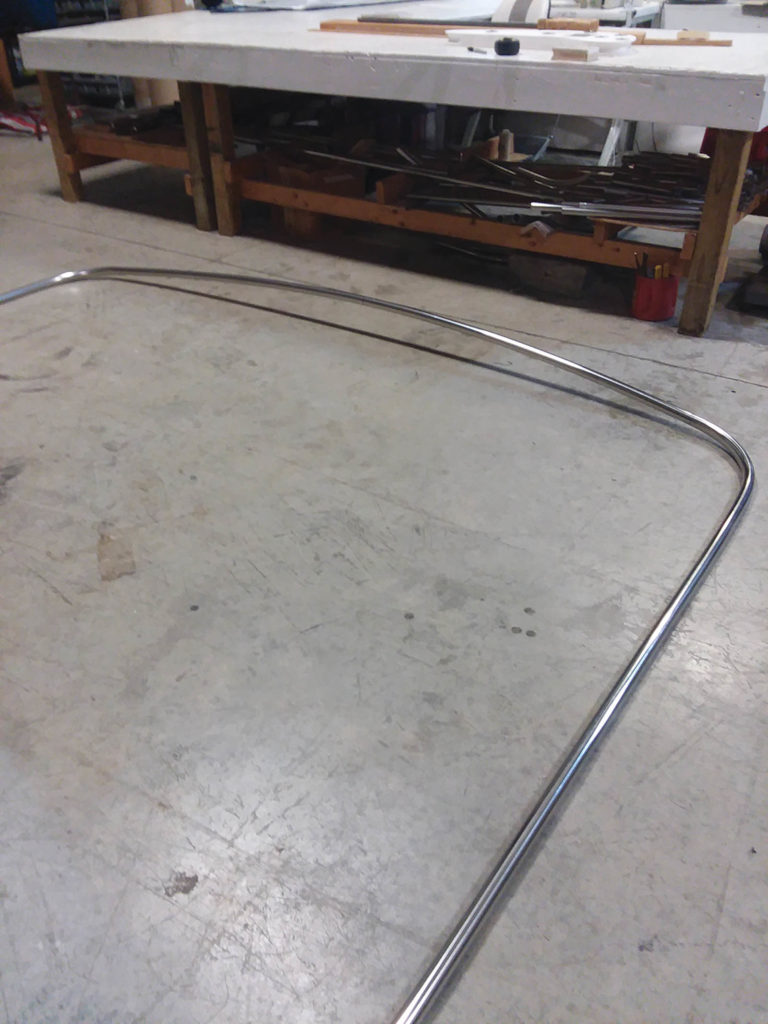
Mid-bow know-how
After you’ve built a horizontal main frame, add a mid-bow. Mid-bows can be almost vertical or angled depending on the height and the aesthetic you’re after. Since we try to achieve a minimum height of 74 inches at the rear entry door, the top likely has plenty of watershed angle already, as most arches are taller than 74 inches. A 4-inch drop from front to rear is ample for watershed (Photo 7). However, the mid-bow should be positioned at three-quarters rearward on the main frame. This allows a steeper angle of the canvas top near the radius and prevents puddling from occurring in the corners.

Additional details
Although conventional bow pockets are customary for the rear of the top and mid-bow tubes, sometimes you’ll want to secure the sides of the top using snap-flaps. Snap-flaps are typically 2.5-inch finished and are sewn into the rain-flap (valance) seam. They are attached to the tube using rivet studs and conventional snaps.
Now the fun part: the enclosure window panels! Be creative by offering solid panels, glassed panels or smiles and frowns (Photo 8). Often, we make an entire duplicate set of the windows in full mesh screen, offering the boat owner a large screened-in porch experience. For more information, check out the Bimini Enclosure course at CanvasTraining.com.
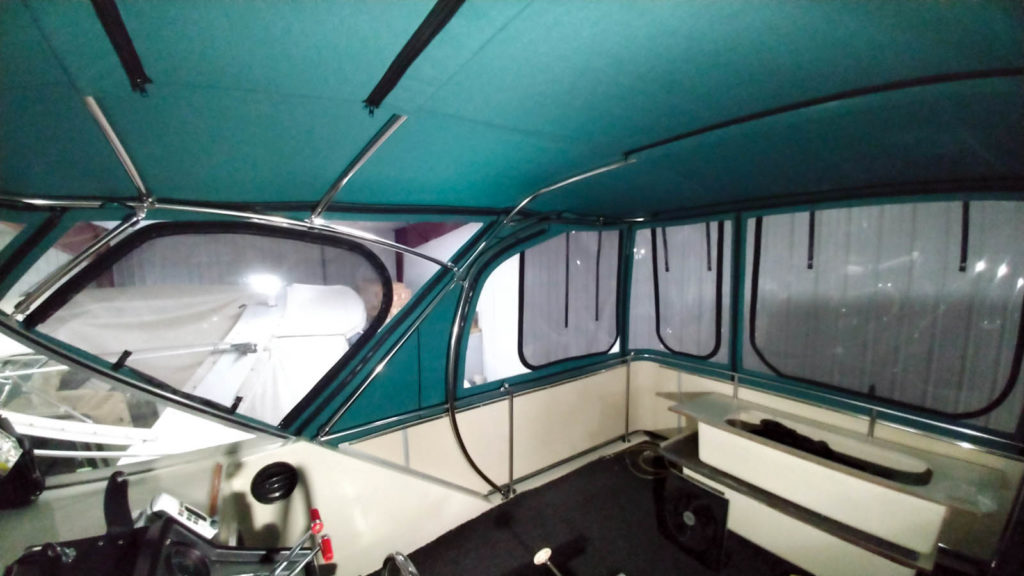
Russ Griffin is co-owner and instructor at Northcoast Marine Specialties LLC. Northcoast operates a canvas-making training school in Port Clinton, Ohio.
 TEXTILES.ORG
TEXTILES.ORG 


